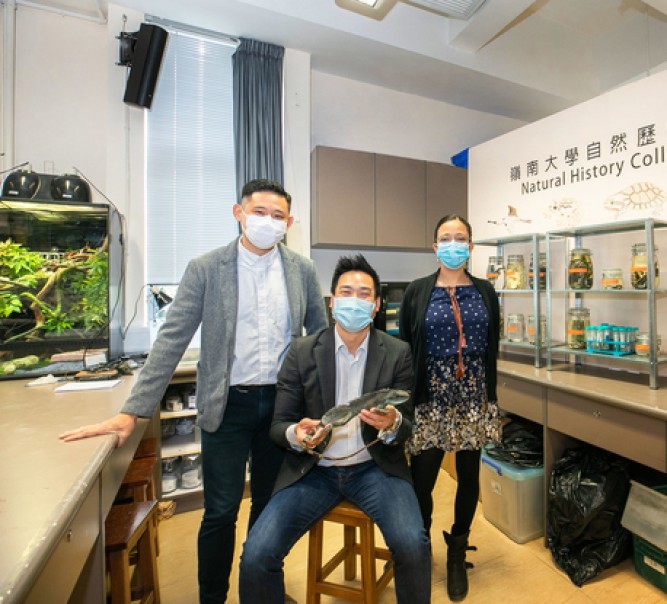LU builds unique specimen collection of amphibians and reptiles in Hong Kong

LU has recently established a publicly accessible Natural History Collection of specimens of local amphibians and reptiles to document Hong Kong’s biodiversity, and for research, conservation and education purposes.
Photo: Project leader Prof Jonathan Fong (centre), with teammates Prof Sung Yik-hei (left), and Dr Itzue Caviedes-Solis (right).
The Science Unit of LU started the Collection in 2019, and has currently documented over 500 individual specimens, representing 92% of the amphibian species and 36% of the reptile species in Hong Kong. It consists of preserved specimens, tissue samples for genetic analysis, photographs and associated data (location, date, habitat type).
The Collection contributes to the goals of Hong Kong Biodiversity Strategy and Action Plan, and is funded by The Environment and Conservation Fund of the HKSAR Government.
By accessing the Collection’s website, the general public reaches the database of various species of amphibians and reptiles which have high conservation or scientific research values, including Romer’s tree frog and the white-headed blind snake.
The Collection will loan specimens to local and international scientists and schools for research and teaching purposes. The Science Unit will also arrange public tours for schools and the general public.
One of the most precious species in the Collection is Romer’s tree frog (Liuixalus romeri), which is found solely in Hong Kong and considered endangered by the International Union for Conservation of Nature (IUCN). Its native habitat is on the outlying islands of Hong Kong (Lantau, Chep Lap Kok, Po Toi and Lamma). During the construction of the new airport in 1992, the Chep Lap Kok population of Romer’s tree frog was saved by being translocated to multiple localities across Hong Kong. The Collection will provide valuable data for the conservation management of Romer’s tree frog, as well as providing a case study on conservation translocation.
“As technology advances, collections are also important resources for genetic studies. The Collection can be compared to a library, while the specimens are like books. Specimens represent a valuable resource for future generations, often for uses that we currently cannot predict. For example, the impact of climate change was revealed by comparing specimens from modern times to those collected in 1911, when there was no concept of climate change,” said research team leader Prof Jonathan Fong.
For details of LU’s Natural History Collection, please visit: https://lingnancollection.wixsite.com/naturalhistory

